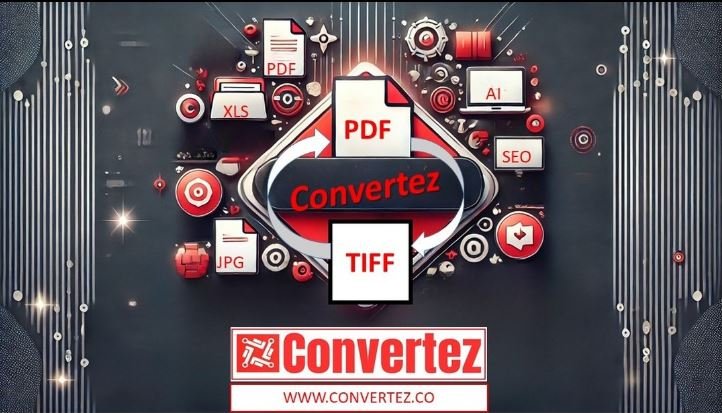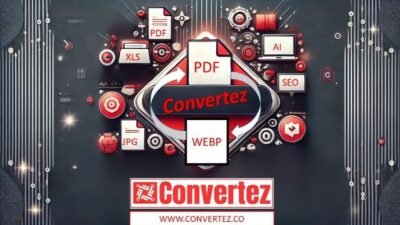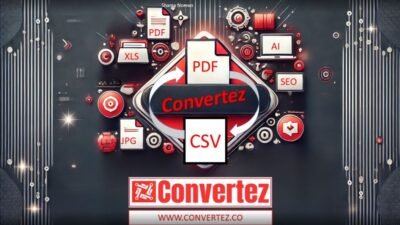In the ever-evolving digital world, document conversions have become a regular part of our workflows. One such common requirement is converting PDF to TIFF. Whether you’re a graphic designer, engineer, archivist, or just someone needing high-quality image outputs, this guide will walk you through why and how to convert PDF to TIFF, its benefits, and the best tools available for the job.
What is a PDF File?
PDF (Portable Document Format) is a file format developed by Adobe that preserves the layout, fonts, images, and formatting of documents across different devices and platforms. PDFs are widely used for contracts, invoices, eBooks, manuals, and more due to their reliability and compatibility.
What is a TIFF File?
TIFF (Tagged Image File Format) is a high-quality image format used primarily for storing raster graphics and scanned documents. TIFF files support lossless compression, meaning that no image data is lost during compression, making it ideal for archiving, publishing, and image editing tasks.
Why Convert PDF to TIFF?
You may wonder, why would someone convert a PDF into a TIFF file? Here are some solid reasons:
1. High-Quality Image Output
TIFFs are known for their superior image quality. When converting PDFs—especially those with detailed graphics or scans—into TIFF format, you retain more clarity and fidelity.
2. Archiving and Preservation
Many libraries, legal departments, and government agencies use TIFF format for document preservation due to its stability, long-term support, and compatibility with archiving systems.
3. Print and Publishing
Since TIFF files are print-ready and widely accepted in desktop publishing and print media, converting PDFs to TIFF is a great step when preparing content for physical distribution.
4. OCR and Image Processing
Optical Character Recognition (OCR) systems and image processing tools often prefer TIFF format for scanning and editing text from images. PDFs, especially with complex formatting, are harder to process.
5. Security and Editing Restrictions
Unlike PDFs, which can be edited or annotated using Adobe tools, TIFF files are purely image-based. This makes them less susceptible to unwanted changes.
Use Cases: Who Needs PDF to TIFF Conversion?
- Architects & Engineers: Convert CAD drawings in PDF to TIFF for print or image annotations.
- Legal Professionals: Prepare court-ready documents with image formats that ensure no alterations.
- Graphic Designers: Use TIFFs for layout integration and editing in software like Adobe Photoshop.
- Medical Industry: Store scanned medical reports and prescriptions in a reliable TIFF format.
- Researchers & Archivists: Preserve historical documents in a non-editable, high-quality image format.

How to Convert PDF to TIFF
There are various methods to convert a PDF to TIFF, ranging from online converters to desktop software. Let’s explore the most common ones:
1. Using Online PDF to TIFF Converters
Fast, free, and easy-to-use, online converters are perfect for quick conversions without installing any software.
Try it on Convertez.co – PDF to TIFF Converter
With Convertez, you can convert PDFs to TIFF images in seconds. It’s 100% free and works right from your browser.
Steps:
- Go to the PDF to TIFF converter on Convertez.
- Upload your PDF file.
- Click “Convert.”
- Download your TIFF file.
2. Using Adobe Acrobat Pro
If you have Adobe Acrobat Pro, it allows exporting a PDF to image formats including TIFF.
Steps:
- Open the PDF in Adobe Acrobat Pro.
- Go to File > Export To > Image > TIFF.
- Choose settings like resolution or color profile.
- Save the file.
3. Using Desktop Software
Apps like Preview (on Mac), IrfanView, or GIMP can also help in PDF to TIFF conversion with more control over resolution and compression.
Things to Consider Before Conversion
✅ Resolution
TIFF images are typically used for high-quality output. Choose a high DPI (Dots Per Inch) setting like 300 or 600 for best results, especially for print.
✅ File Size
TIFFs can be large. Make sure you have enough storage space, especially if converting multi-page PDFs or using uncompressed TIFF settings.
✅ Color Settings
TIFF supports black and white, grayscale, and full-color formats. Match the color depth to your needs—monochrome for text documents or RGB for images.
✅ Compression Type
TIFF supports both lossless compression (like LZW or ZIP) and uncompressed formats. Choose wisely depending on your use case.
Advantages of Using Online PDF to TIFF Tools
- No Installation Needed
Just upload and convert—ideal for one-time or quick jobs. - Cross-Platform Compatibility
Works on Windows, macOS, Linux, Android, or iOS. - Free & Fast
Many online tools like Convertez are completely free and don’t require sign-up. - Secure
Reputable services delete your files after processing to protect your privacy.
Why Choose Convertez for PDF to TIFF?
Convertez is designed for simplicity, speed, and flexibility. With over 250+ free conversion tools, it’s the ultimate one-stop shop for students, professionals, and businesses.
Features of Convertez PDF to TIFF Tool:
- Drag-and-drop interface
- Bulk file conversion support
- No watermarks
- File deleted automatically after processing
- Free forever
Common Questions (FAQs)
Q1: Will the text in the PDF remain editable after converting to TIFF?
No. TIFF is an image format, so text becomes part of the image and is no longer editable.
Q2: Can I convert multi-page PDFs into multi-page TIFFs?
Yes, advanced tools (including some online ones) support multi-page TIFF outputs.
Q3: Are TIFF files bigger than PDFs?
Generally, yes. TIFF files tend to be larger due to high-quality image data.
Q4: Is TIFF better than JPEG for PDF conversions?
For quality and editing flexibility—yes. JPEG is compressed and may lose quality, while TIFF preserves it.
Conclusion
Converting PDF to TIFF is a valuable solution when you need high-quality, non-editable, and print-ready document images. Whether you’re archiving important records, preparing files for publishing, or need a reliable image format for OCR processing, TIFF offers unparalleled quality and durability.
With tools like Convertez.co’s PDF to TIFF converter, you don’t need to be a tech expert to get professional results. Just upload, convert, and download—it’s that simple!


